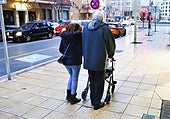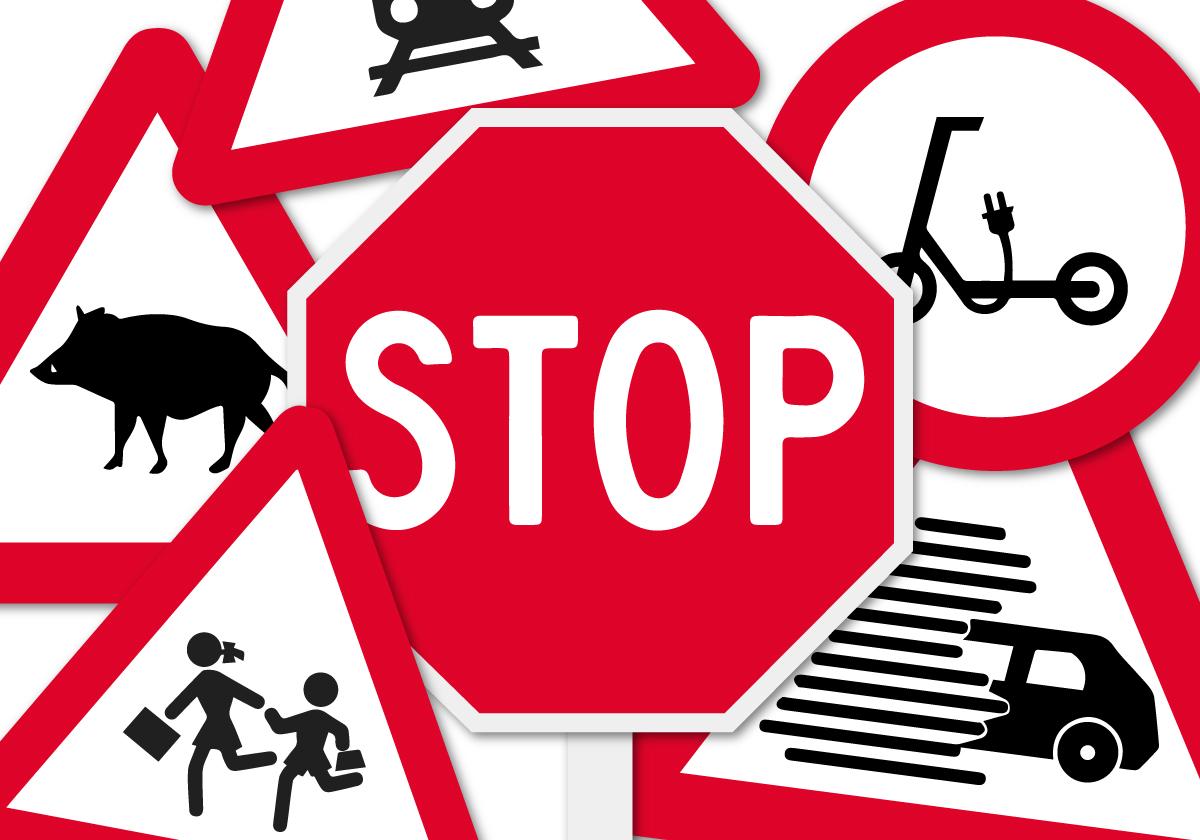"Green Light" for New Traffic Signs
The Council of State has reviewed the code incorporating pictograms such as the wild boar or electric scooter, prioritising the girl in school zones. "There are technical issues to correct, but the design remains unchanged," say sources from the DGT, who expect approval by summer.
José Antonio Guerrero
Madrid
Sunday, 20 April 2025, 07:26
It is only a matter of time before the new catalogue of traffic signs, initiated by the DGT in 2023 after two decades of inactivity, is fully implemented on our roads. The latest step in this direction is the "general" approval from the Council of State (the main advisory body of the Government) for the amendment of the General Traffic Regulations concerning road signage. The opinion results from a consultation by the Ministry of the Interior, which, along with the Ministry of Transport and Mobility, must now make the proposed "technical" corrections before submitting the final text to the Council of Ministers for subsequent publication in the BOE. "There are technical issues to correct, but the design remains unchanged," assure sources from the DGT.
130 Signs
This is the number of signs that will either feature completely new pictograms or be modified in the new catalogue designed by the Ministries of the Interior and Transport.
"Now we can truly say we are in the final stages," assert the consulted Traffic officials, who are confident that the regulation will become a reality before the end of summer. Some signs have already begun to be installed by municipalities and provincial councils. For instance, the prohibition of access to Low Emission Zones or the restriction on electric scooters and other personal mobility vehicles. The sign warning of wild boars, a type of wildlife that has been proliferating for years and causing most road accidents involving wild animals, is also installed on certain secondary roads. In total, there are slightly more than a hundred new signs and about thirty modified indications. Here are some of the most striking ones.
Level Crossing Without Barriers Sign P-8
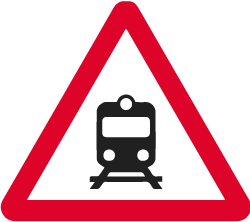
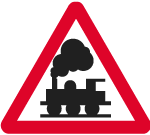
This is how it used to be ▲
The new catalogue has modernised icons to resemble more closely the current versions of the vehicles depicted. The clearest example is the Level Crossing Without Barriers sign, also known as P-8, which indicates danger due to the proximity of a level crossing not equipped with barriers or semi-barriers. Before the regulation update, it featured a steam locomotive, complete with smoke. Now, the icon has been changed to depict a more modern-looking electric train.
Children Sign P-21a
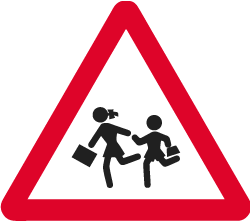
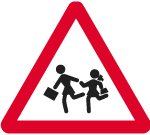
This is how it used to be ▲
The update of existing traffic signs also aims to eliminate "inappropriate" gender connotations. Among them, the sign warning of children near a school zone is notable. The old sign depicted a boy leading a girl running behind him to school, which was deemed discriminatory. In the new pictogram, it is the girl leading the boy, trotting ahead and carrying a larger bag.
Reduced Visibility Sign P-33
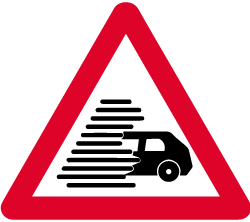

This is how it used to be ▲
Another updated sign is this triangular one (triangular signs are always warnings or dangers) that alerts drivers to the proximity of a section where visibility is often significantly reduced due to fog, rain, snow, smoke, etc. The old sign could lead drivers to think they were entering a section with possible rockfalls. Moreover, it resembles the new Low Emission Zones sign, already installed in many cities with LEZ. To avoid confusion, the new icon features a car entering a sort of fog bank represented by a series of horizontal lines.
Stop Sign (R-2)
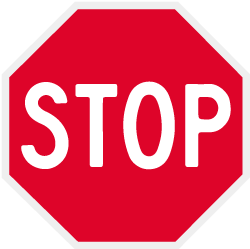
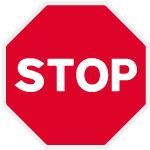
This is how it used to be ▲
The new STOP sign retains its octagonal shape to distinguish it from all others, even if only seen from the back, but will introduce changes in typography. The letters STOP still occupy the centre of the sign, but they will be larger and more visible so that drivers can notice them even from a distance.
Animal Sign P-24a
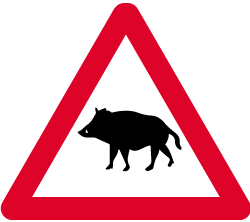
It may become the "star" of the new catalogue of signs or one of the most discussed, as the proliferation of wild boars is becoming a serious problem for drivers. This new sign features the pictogram of a wild boar (even distinguishing a white tusk on its snout) to indicate a "significant proportion" of these wild animals in the area. Wild boars are responsible for no less than 40% of accidents involving animals on Spanish roads, surpassing those caused by roe deer (35%), which do have their own pictogram, warning generally of the danger of loose animals or possible crossings of free-roaming animals. The silhouette of the wild boar joins the array of fauna "depicted" on road signs, such as the aforementioned roe deer (or stag), lynx, or cow.
VMP and Cycles Sign R-119
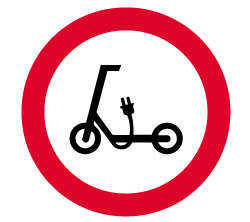
It is one of the signs that were completely unimaginable in 2003, when the previous General Traffic Regulations, which included the catalogue of signs that has been in force for over 20 years, were approved. At that time, the scooter was not even considered a vehicle for city travel, let alone an electric one. Incorporated into the new inventory of signs, this circular piece prohibits the access of Personal Mobility Vehicles, represented in this case by an electric scooter. Other vehicles "prohibited" by this same pictogram include segways and hoverboards (used by many tourism companies for urban tours) and electric unicycles, characterised by having a large wheel and lacking handlebars.
Sign P-35
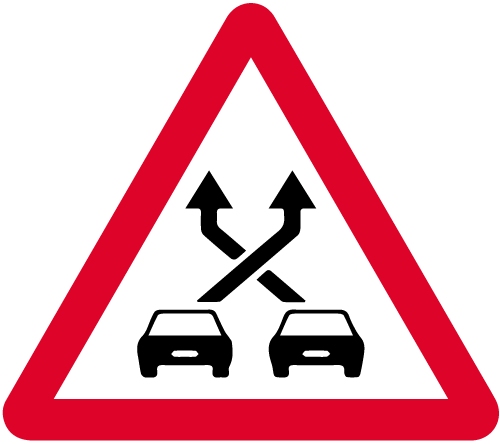
Also known as P-35, it is one of the new traffic signs added to the catalogue. It refers to the weaving lane and warns of the danger due to the proximity of a section between a confluence and a bifurcation, where various lane change movements occur by vehicles, crossing their paths and thus increasing the risk of collisions. It is represented by two cars and two arrows crossing, indicating possible lane changes.
Visibility Issues "in 80% of Signs"
It is estimated that there are four million vertical signs installed on state roads, excluding those under the jurisdiction of municipalities and provincial councils, but their condition is not ideal. The latest report from the Spanish Road Association – which conducts visual inspections every two years – indicates that 100,000 code signs need to be renewed on the State network and another 260,000 on the regional network, mostly due to having exceeded the six, eight, or ten-year warranty provided by manufacturers for retroreflective sheets, which does not guarantee full nighttime visibility. "When driving at night with lights, you must be able to see what the sign says, and in many cases, it is not visible," points out Manuel Arbona, president of the Association of Metallic Traffic Sign Manufacturers (Afasemetra). Arbona estimates that 80% of the signs are in a "lamentable state" of visibility and should be renewed, for which he calls for increased public investment in this aspect of road safety "which affects all users." Afasemetra conducted a study in 2019 (the most recent they have) which estimated that "at least" 2.3 million signs had expired the warranty period of the retroreflective sheet, "therefore they would have ceased to perform their function correctly."
Credits
-
Design: Lidia Carvajal




